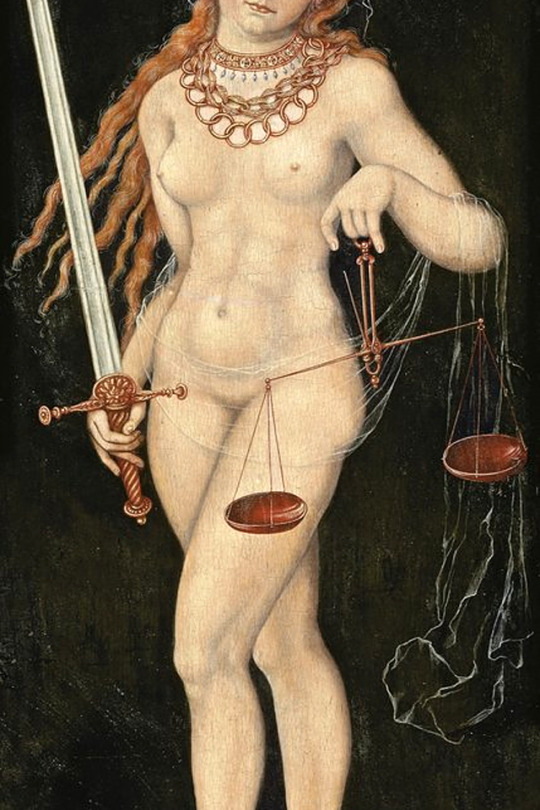#goller
Explore tagged Tumblr posts
Text

Ruth Goller, skylla, (Limited Edition Octopodic Iris Color Vinyl LP, Classic Black Vinyl LP, Digital Album), IARC0091, International Anthem, 2024








All music written and recorded by Ruth Goller
Electric bass, double bass and vocals on all tracks by Ruth Goller Vocals on tracks 3, 5, 6 by Alice Grant Vocals on tracks 4, 6, 7 by Lauren Kinsella
Produced and mixed by Kit Downes Mastered by Tyler McDiarmid
Artwork by Paula Rae Gibson Design by Pedro Velasco Reissue design by Craig Hansen
Originally released by Vula Viel Records (VVLP004) July 9, 2021
#graphic design#art#music#music album#vinyl#cover#ruth goller#alice grant#lauren kinsella#kit downes#tyler mcdiarmid#paula rae gibson#pedro velasco#craig hansen#vula viel records#international anthem#2020s
15 notes
·
View notes
Photo

Gerechtigkeit (detail)
attrib. to Christian Goller (German, 1943 – 2017) after Lucas Cranach d. Ä. (Bambergian, 1472 – 1553) oil on panel, n. d.
Christie’s
#771334995404095488/kjEENkl4#Christian Goller#[after]#Lucas Cranach I.#Iustitia#Germany#Renaissance Revival#allegorical#♀#nυde#contemporary art#paintings
7 notes
·
View notes
Photo

Celia Fremlin (pseudonym of Celia Margaret Goller) - Don't Go To Sleep In The Dark: Short Stories - J.B. Lippincott Company - 1970
#witches#darksleepers#occult#vintage#don't go to sleep in the dark#stories#celia fremlin#celia margaret goller#j.b. lippincott#1970#13 short stories
148 notes
·
View notes
Text
futbol ne moruk ya
2 notes
·
View notes
Audio
Maddaleni Ghezzi & Ruth Goller’s Dolomite
#maddalena ghezzi#ruth goller#dolomite#dēngyuè records#music#vocal#chamber music#ambient#folk#jazz#pop#electronic#avant garde#experimental#bandcamp
4 notes
·
View notes
Text

It is his birthday! Wish him happy!!
2 notes
·
View notes
Text
If Felsi actually becomes holder today, I'm gonna have to give it to gwitch for pulling the most insane twists possible
#the witch from mercury#bruh#is this happens im gonna hoot and goller so hard#miorine is going to want ro commit murder#BUT SHE'S DOING IT FOR SULETTAAA
13 notes
·
View notes
Photo





1. FC Nürnberg: Enrico #Valentini: Ich bin einfach froh, dass wir es geschafft haben. Und es freut mich heute am meisten, dass wir es aus eigener Kraft geschafft haben, mit einem eigenen Sieg und wir nicht auf andere angewiesen waren.
#1. FC Nürnberg#Wir sind der Club#nächste Saison same procedure as every year: BESTE ZWEITE LIGA ALLER ZEITEN!#Fußball#Enrico Valentini#Nathaniel Brown#Lukas Schleimer#Erik Shuranov#Jannik Hofmann#Jan Reichert#James Lawrence#Carl Klaus#Christoph Daferner#Pascal Köpke#Benjamin Goller#Sadik Fofana#Fabian Nürnberger#Felix Lohkemper#Jannes Horn#Can Uzun#Fußballgott!#Lino Tempelmann#Tim Handwerker#Kwadwo Duah#Ohmann und das mit so einer improvisierten Elf wer hätte das gedacht not me
2 notes
·
View notes
Photo

Bruno Goller - Blumenstrauss in rosefarbener Vase
3 notes
·
View notes
Text

Saint Catherine
early 1970s
Christia Goller (German, 1943-2017)
imitator of Matthias Grünewald (German, c. 1480-1528)
Germany, style of 16th Century.
Oil on panel
0 notes
Audio
As a new month rolls in, it's time to immerse ourselves in the musical headspace of another artist we deeply adore. We unveil the latest guest mix in our ongoing series for Blue-In-Green:RADIO. This month, Italian-born, UK-based musician Ruth Goller steps thru, bringing fresh perspectives and eclectic vibes. So join us and let Ruth take you on a listening adventure you won’t want to miss.
0 notes
Text
Porto 90+4'te attı, avantajı kaptı
UEFA Şampiyonlar Ligi son 16 turu ilk maçında Porto sahasında ağırladığı Arsenal’i son dakikalarda bulduğu golle 1-0 mağlup etti. Portekiz temsilcisi 90 dakkikası 0-0 devam eden maçta İngiliz ekibi Arsenal’i 90+4. dakikada Galeno’nun attığı golle 1-0 yendi. Rövanş maçı için avantajı cebine koyan Porto, 12 Mart’ta Arsenal’a konuk olacak. UEFA Konferans Ligi’nde tur Maccabi Haifa’nın Öte yandan…

View On WordPress
0 notes
Text
BMW Going Full Electric
During the Shanghai Auto Exposition 2023, the CEO and regional manager of BMW in the China Region, Jochen Goller, stated that the future of the automobile is ‘electric’ and that its time to ask what this means for the future of BMW and the car industry.
During the Shanghai Auto Exposition 2023, the CEO and regional manager of BMW in the China Region, Jochen Goller, stated that the future of the automobile is ‘electric’ and that its time to ask what this means for the future of BMW and the car industry. During the exposition, BMW claims that the goal of the new electric vehicles is to be high performing, luxurious and eyes open towards the…

View On WordPress
#Auto Exposition#BMW#BMW IX 1#CEO#China Region#Enhanced Intelligent Assistant#EPA#Jochen Goller#Mini Acemen#Shamghai#Shanghai Auto Exposition#Silicon Age#UI desigin
0 notes

